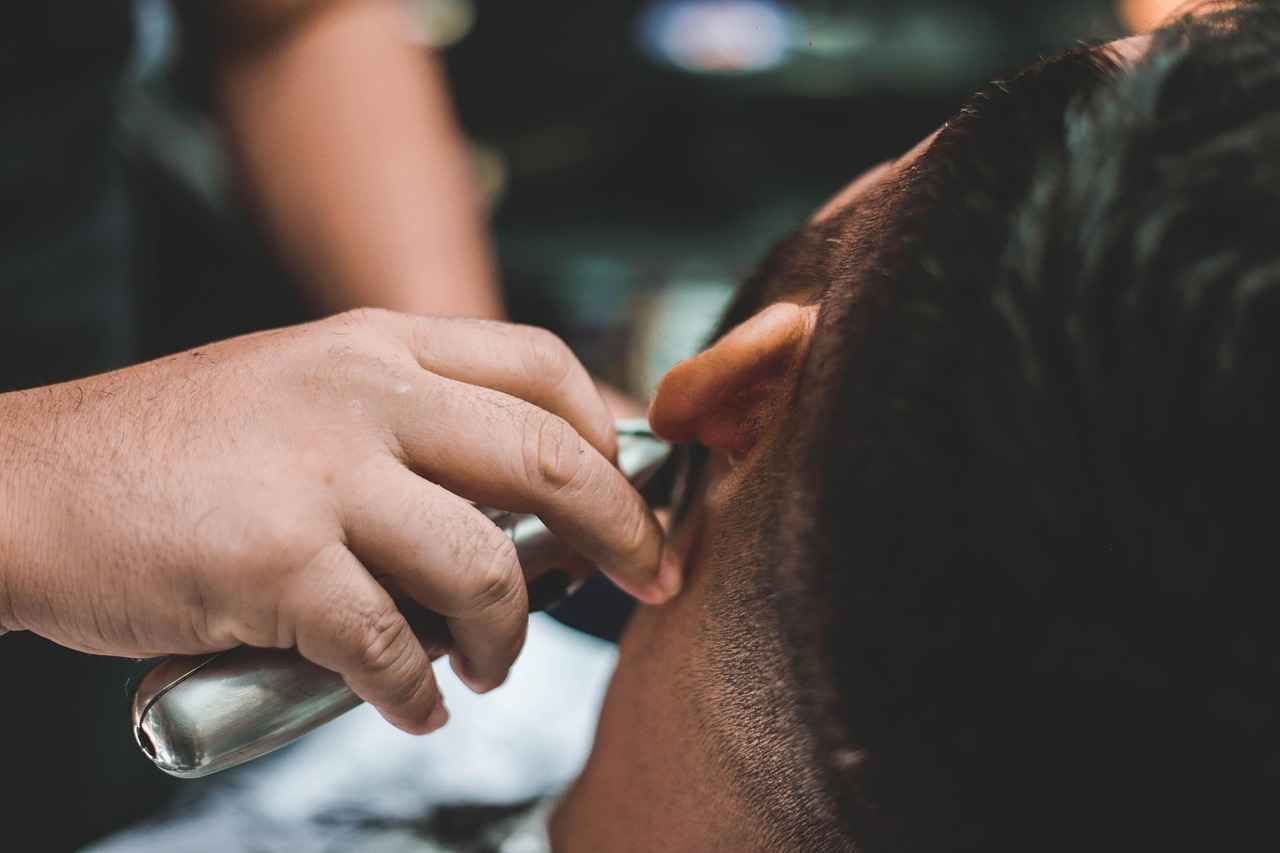This comprehensive guide will explore the post-operative journey following a hair transplant, detailing recovery, results, and expert insights to help you navigate your expectations effectively.
Understanding Hair Transplant Surgery
Hair transplant surgery involves moving hair follicles from one part of the body, typically the back or sides of the head, to areas experiencing thinning or baldness. The two primary techniques used in hair transplants are Follicular Unit Transplantation (FUT) and Follicular Unit Extraction (FUE). Each method has its own set of advantages and is chosen based on the patient’s specific needs.
The Recovery Process Explained
Post-surgery recovery is critical for optimal results. Expect the healing process to unfold over several weeks. During this time, following care instructions is essential to ensure a smooth recovery.
- Initial Days After Surgery: The first few days are crucial. Patients may experience swelling, redness, and discomfort. It’s important to rest and avoid strenuous activities.
- Managing Pain and Discomfort: Pain relief options, such as over-the-counter medications, can help manage discomfort. It’s normal to feel some pain, but it should be manageable.
- Post-Operative Care Instructions: Keeping the transplanted area clean and avoiding sun exposure are vital. Patients should follow their surgeon’s specific guidelines closely.
Long-Term Healing and Growth
Hair growth after a transplant is a gradual process. Initially, transplanted hair may fall out, a normal part of the cycle. New hair growth typically begins within a few months, with significant results visible after about a year.
Potential Side Effects and Concerns
Like any medical procedure, hair transplants can have side effects. Common issues include:
- Swelling and bruising
- Itching in the transplant area
- Infection
Knowing when to seek medical advice is crucial. If symptoms worsen or do not improve, contacting a healthcare professional is advised.
Realistic Expectations for Results
Setting realistic expectations is key to satisfaction with your hair transplant. Factors influencing results include:
- The patient’s age and genetics
- The skill of the surgeon
- The technique used during the procedure
Maintaining Your New Hair
Post-transplant care doesn’t end after recovery. Maintaining your new hair involves using the right products and adopting healthy habits. Recommended products include gentle shampoos and conditioners that promote hair health.
Conclusion: Embracing Your New Look
Embracing your new look after a hair transplant can be a transformative experience. With the right expectations and care, you can enjoy a fuller head of hair and renewed confidence.

Understanding Hair Transplant Surgery
is essential for anyone considering this procedure. Hair transplant surgery is a medical technique that involves relocating hair follicles from a donor area, typically the back or sides of the head, to areas experiencing thinning or baldness. This method not only restores hair but also enhances the patient’s overall appearance and confidence.
There are primarily two techniques used in hair transplant surgeries: Follicular Unit Transplantation (FUT) and Follicular Unit Extraction (FUE).
- Follicular Unit Transplantation (FUT): This method involves removing a strip of skin from the donor area, from which individual hair follicles are extracted. The scalp is then stitched closed, and the harvested follicles are implanted into the balding areas. This technique can yield a large number of grafts in a single session.
- Follicular Unit Extraction (FUE): In contrast, FUE involves extracting individual hair follicles directly from the scalp using a specialized tool. This method leaves minimal scarring and allows for quicker recovery times, though it may require more time to harvest a sufficient number of follicles.
Both techniques have their advantages and are chosen based on the patient’s specific needs, hair type, and the extent of hair loss. The decision on which method to use is typically made during a consultation with a qualified hair transplant surgeon.
Before undergoing surgery, patients should have realistic expectations about the results. Hair growth after a transplant is gradual, with most patients noticing significant changes within six to twelve months. It is also important for patients to follow post-operative care instructions to ensure the best possible outcome.
In conclusion, understanding the basics of hair transplant surgery can help individuals make informed decisions about their hair restoration options. Consulting with a skilled surgeon will provide personalized insights tailored to each patient’s unique situation.

The Recovery Process Explained
Post-surgery recovery is a vital phase that significantly impacts the overall success of your hair transplant. Understanding what to expect during this time can help you navigate the healing process more effectively. In this section, we will discuss the essential timelines, care instructions, and insights to ensure a smooth recovery.
Immediately following the procedure, patients can expect some swelling and discomfort in the donor and recipient areas. These symptoms are typically manageable with prescribed medications and usually subside within a few days. It’s crucial to follow the post-operative care instructions provided by your surgeon to minimize complications.
- Days 1-3: Expect tenderness and some swelling. It’s advisable to rest and avoid strenuous activities.
- Days 4-7: Swelling should begin to decrease. You may notice some scabbing in the transplanted area, which is normal.
- Weeks 2-4: Most patients return to their regular activities. However, it’s essential to avoid direct sunlight and excessive sweating.
- Months 1-3: Hair may start to shed, which is a normal part of the growth cycle. New hair growth typically begins around three months.
To promote healing and protect your newly transplanted hair, adhere to the following care instructions:
- Keep the area clean: Gently wash your hair with a mild shampoo as directed by your surgeon.
- Avoid touching: Refrain from touching or scratching the transplanted area to prevent infection.
- Follow-up appointments: Attend all scheduled follow-up visits to monitor your progress and address any concerns.
In conclusion, a successful recovery after a hair transplant is achievable by following the recommended guidelines and being mindful of your body’s healing process. By understanding the typical timelines and care practices, you can set realistic expectations and pave the way for optimal results.
Initial Days After Surgery
The initial days after a hair transplant are critical to ensure a successful recovery and optimal results. During this period, patients may experience a range of symptoms and discomfort, which is completely normal. Understanding what to expect and how to care for yourself can significantly influence the healing process.
Immediately following the procedure, you may notice some swelling around the forehead and eyes, which typically peaks around the second day. This swelling is a result of the surgical process and should subside within a few days. Additionally, some patients experience redness and itchiness in the transplanted area, which is also expected as the scalp begins to heal.
To manage discomfort and promote healing, consider the following care tips:
- Follow Your Surgeon’s Instructions: Adhere strictly to the post-operative care instructions provided by your surgeon. This may include medications to manage pain and prevent infection.
- Keep the Area Clean: Gently wash your hair as directed, using a mild shampoo. Avoid scrubbing the transplanted area to prevent dislodging the hair follicles.
- Avoid Physical Activity: Refrain from strenuous activities and exercise for at least a week to minimize swelling and promote healing.
- Stay Hydrated: Drink plenty of water to support your body’s healing processes.
- Sleep with Your Head Elevated: Use extra pillows to keep your head elevated while sleeping, which can help reduce swelling.
By following these guidelines, you can effectively manage discomfort and create a supportive environment for your new hair follicles. Remember, patience is key during the healing process, and adhering to post-operative care will contribute to the best possible results.
Managing Pain and Discomfort
After undergoing a hair transplant, it is crucial to understand how to effectively manage pain and discomfort during the recovery process. While some level of discomfort is expected, knowing what is normal and what can be done to alleviate pain can significantly enhance your experience.
In the initial days following the procedure, patients may experience swelling, tenderness, and mild pain in the donor and recipient areas. These symptoms are typical and should gradually subside. However, there are several pain relief options available to help you cope:
- Over-the-Counter Pain Relievers: Medications such as ibuprofen or acetaminophen can be effective in managing mild to moderate pain.
- Cold Compresses: Applying a cold compress to the affected areas can help reduce swelling and numb discomfort.
- Prescription Medications: In some cases, your doctor may prescribe stronger pain relief options for more severe discomfort.
It is important to follow your surgeon’s recommendations regarding medication and pain management. Be sure to take medications as directed and avoid any substances that may interfere with healing, such as alcohol or smoking.
During recovery, monitoring your symptoms is essential. While some pain is normal, you should be aware of signs that may indicate complications, such as:
- Severe pain that does not improve with medication
- Fever or chills
- Excessive swelling or redness
If you experience any of these symptoms, it is vital to contact your healthcare provider immediately. Understanding what to expect and how to manage pain effectively will help you navigate your recovery with confidence.
Post-Operative Care Instructions
Following a hair transplant, adhering to specific care instructions is crucial for successful healing and optimal results. This section outlines recommended practices to maintain hygiene and protect the transplanted area, ensuring a smooth recovery process.
- Keep the Area Clean: Gently wash your scalp with a mild shampoo as advised by your surgeon. Avoid scrubbing the transplanted area for the first few days to prevent dislodging the grafts.
- Avoid Direct Sunlight: Protect your scalp from sun exposure by wearing a hat or using sunscreen once the healing process allows. Direct sunlight can damage the sensitive skin and impact healing.
- Do Not Scratch or Rub: It may be tempting to scratch the itchy areas, but doing so can disrupt the healing process and lead to complications. Use cold compresses to alleviate discomfort.
- Follow Medication Guidelines: Take any prescribed medications, such as pain relievers or antibiotics, as directed by your healthcare provider. This will help manage pain and reduce the risk of infection.
- Stay Hydrated and Maintain Nutrition: Eating a balanced diet rich in vitamins and minerals can promote healing. Stay hydrated to support overall health and recovery.
- Limit Physical Activity: Avoid strenuous activities and heavy lifting for at least a week post-surgery. This will help minimize swelling and prevent excessive strain on the transplanted area.
- Attend Follow-Up Appointments: Regular check-ups with your surgeon are essential to monitor the healing process and address any concerns. Don’t hesitate to reach out if you notice unusual symptoms.
By diligently following these care instructions, you can significantly enhance the likelihood of a successful hair transplant outcome. Remember that patience is key, as the healing process can take time, but your efforts will be rewarded with fuller, healthier hair.
Long-Term Healing and Growth
following a hair transplant is a crucial aspect of the overall journey towards achieving fuller, healthier hair. Understanding the timeline and what to expect can significantly enhance your experience and satisfaction with the results.
Immediately after the procedure, it is common for patients to experience some swelling and discomfort. However, as the healing process progresses, you will begin to notice changes in your hair growth. Here’s a detailed timeline of what to expect:
| Time Frame | What to Expect |
|---|---|
| Weeks 1-2 | During this period, you may notice some shedding of the transplanted hair, which is completely normal. This is often referred to as shock loss, where the hair follicles enter a resting phase. |
| Month 1-3 | New hair growth typically begins around the 3-month mark. You may see fine, soft hair emerging, which may not yet be fully visible. This is a sign that the follicles are establishing themselves. |
| Month 4-6 | By this stage, the new hair should start to thicken and become more noticeable. You may also observe a change in hair texture as it begins to blend with your existing hair. |
| Month 7-12 | Significant improvement in hair density can be expected. Most patients notice substantial growth and fullness by the end of the first year. Your hair will continue to mature and fill in over time. |
Throughout this journey, it’s essential to maintain a proper hair care routine and follow your surgeon’s post-operative instructions. This includes avoiding harsh chemicals, minimizing heat styling, and using recommended hair products to support healthy growth.
In conclusion, while the process of hair growth after a transplant is gradual, understanding the timeline can help set realistic expectations. Embrace each phase of growth, and remember that patience is key to achieving the desired results.

Potential Side Effects and Concerns
Undergoing a hair transplant is a significant decision, and while many patients experience positive outcomes, it is crucial to be aware of the potential side effects that may arise. Understanding these concerns can help you make informed choices and ensure a smoother recovery process.
Common Side Effects
- Swelling: Mild swelling around the forehead is common and typically resolves within a few days.
- Redness: The scalp may appear red in the transplanted areas, which usually subsides in a week or two.
- Pain and Discomfort: Some patients experience mild pain or discomfort, which can be managed with prescribed pain relief medications.
- Itching: Itching is a normal part of the healing process, but excessive scratching should be avoided to prevent damage to the grafts.
- Shock Loss: Temporary hair shedding may occur in the weeks following the procedure, but this is generally a normal part of the hair growth cycle.
Identifying Serious Complications
While most side effects are mild, it is essential to recognize signs of more serious complications. Look out for the following:
- Infection: Symptoms may include increased pain, swelling, or pus discharge from the surgical site.
- Excessive Bleeding: If bleeding persists beyond the first few hours post-surgery, contact your healthcare provider.
- Allergic Reactions: Be aware of any signs of allergic reactions to medications, such as rash or difficulty breathing.
When to Seek Medical Advice
If you experience any of the above serious symptoms, it is crucial to consult with your healthcare professional immediately. Early intervention can prevent complications and ensure your recovery remains on track. Remember, your health and safety should always come first.
In conclusion, while hair transplants can lead to remarkable results, being informed about potential side effects and knowing when to seek help is vital for a successful recovery. Always follow your surgeon’s post-operative instructions and maintain open communication with your healthcare team.
Common Side Effects
Understanding the common side effects of hair transplants can significantly alleviate concerns and set realistic expectations for patients. While hair transplant procedures are generally safe, it is essential to be informed about potential side effects that may arise during the recovery phase. Below, we will outline and describe the typical side effects that patients may experience following their hair transplant surgery.
- Swelling: One of the most common side effects is swelling in the forehead and scalp area. This usually subsides within a few days but can be managed with cold compresses.
- Redness: Patients often notice redness around the transplant sites, which is a normal part of the healing process. This typically resolves within a week or two.
- Itching: Itching is a common sensation as the scalp heals. It is crucial to avoid scratching the area to prevent complications.
- Pain or Discomfort: Some degree of pain may occur, but this can usually be managed with over-the-counter pain relief medications as advised by the surgeon.
- Scabbing: Small scabs may form on the scalp where the hair follicles were implanted. These will fall off naturally as the healing progresses.
- Hair Shedding: It is normal for transplanted hair to shed within the first few weeks post-surgery. This is part of the hair growth cycle and should not cause alarm.
- Infection: Although rare, infection is a potential risk. Signs of infection include increased redness, swelling, and pus. If these symptoms occur, it is important to consult a healthcare professional.
Being aware of these side effects can help patients manage their recovery effectively. If any side effects persist or worsen, it is advisable to seek medical advice to ensure a smooth healing process.
When to Seek Medical Advice
Understanding when to seek medical advice after a hair transplant is essential for ensuring your health and the success of the procedure. While some discomfort and side effects are expected, there are certain red flags that should not be ignored. This guide will help you recognize those signs and understand when it’s time to contact your healthcare provider.
- Excessive Bleeding: If you experience bleeding that does not subside after applying gentle pressure, it’s important to seek medical attention.
- Severe Pain: While some pain is normal, if you find that the pain is unmanageable or worsening over time, consult your doctor.
- Signs of Infection: Symptoms such as increased redness, swelling, or pus around the transplant site may indicate an infection. If you notice these symptoms, reach out to your healthcare provider immediately.
- Fever: A fever following surgery can be a sign of infection or another complication. If your temperature exceeds 100.4°F (38°C), you should seek medical advice.
- Unexpected Hair Loss: It is normal to experience some hair shedding after a transplant, but a sudden or excessive loss of hair can be concerning. If this occurs, consult your doctor.
- Allergic Reactions: If you notice symptoms such as rash, itching, or difficulty breathing, you may be experiencing an allergic reaction to medications or treatments.
In conclusion, being aware of these warning signs can help you take proactive steps in your recovery. Always trust your instincts; if something feels off, it is better to err on the side of caution and seek medical advice. Your health and safety should always come first.

Realistic Expectations for Results
Setting realistic expectations is crucial for achieving satisfaction with your hair transplant. Many individuals undergo this procedure with hopes of immediate and dramatic results; however, understanding the timeline and factors influencing the outcome is essential for a positive experience.
The results of a hair transplant do not appear overnight. The journey to fuller hair involves several phases, each contributing to the overall success of the procedure. Typically, patients can expect to see initial signs of growth within three to four months after the transplant. However, the most significant changes often occur around the six to twelve-month mark, when the new hair begins to thicken and blend with existing hair.
Several factors can impact the success of a hair transplant:
- Genetics: Your genetic predisposition plays a significant role in how well your hair will grow post-transplant.
- Age: Younger patients may experience different growth patterns compared to older individuals.
- Hair Type: The texture and density of your hair can influence the final appearance.
- Post-Operative Care: Following care instructions diligently can greatly enhance results.
It’s important to remember that each individual’s experience is unique. Factors such as the skill of the surgeon and the technique used can also affect the outcome. Consulting with your surgeon about what to expect can help set a realistic timeline and mitigate any potential disappointments.
In conclusion, patience is key when it comes to hair transplants. By understanding the growth phases and the various factors that influence results, you can better navigate your expectations and enjoy the journey towards achieving a fuller head of hair.
Understanding Hair Growth Phases
Hair growth is a complex process that occurs in distinct phases, each playing a crucial role in the overall health and appearance of your hair. Understanding these phases can help you set realistic expectations following a hair transplant and appreciate the gradual changes that will occur.
- Anagen Phase: This is the active growth phase of hair, lasting anywhere from 2 to 7 years. During this period, hair follicles produce new cells, leading to hair lengthening. The duration of the anagen phase can vary significantly among individuals, influenced by genetics and overall health.
- Catagen Phase: Following the anagen phase, hair enters the catagen phase, which lasts about 2 to 3 weeks. This transitional phase is characterized by the cessation of growth as the hair follicle shrinks and detaches from the blood supply. It prepares the hair for the next phase.
- Telogen Phase: The telogen phase is the resting phase of hair growth, lasting around 3 months. During this time, hair does not grow but remains attached to the follicle. Eventually, the hair will shed, making way for new growth as the cycle begins anew.
After a hair transplant, it is essential to recognize that the newly transplanted hair will initially enter the telogen phase before starting to grow. This process can be disheartening for some, but patience is key. Typically, you can expect to see new hair growth starting around 3 to 4 months post-surgery, with fuller results often visible within 12 months.
Understanding these phases not only aids in managing expectations but also emphasizes the importance of proper post-operative care. Engaging in recommended practices and maintaining a healthy lifestyle can positively influence the success of hair growth.
In conclusion, recognizing the phases of hair growth can enhance your journey towards achieving a fuller head of hair. By being informed and patient, you can enjoy the transformation that follows a hair transplant.
Factors Affecting Hair Transplant Success
The success of a hair transplant is influenced by a variety of genetic, environmental, and procedural factors. Understanding these elements can help patients set realistic expectations and improve their overall satisfaction with the results.
- Genetic Factors: Genetics play a crucial role in determining hair loss patterns and the quality of hair follicles. Individuals with a family history of hair loss may experience different outcomes compared to those without such a background. The density and texture of hair can also vary significantly based on genetic predispositions.
- Environmental Factors: External elements such as pollution, climate, and lifestyle choices can impact hair health. For instance, exposure to harsh weather conditions or toxins can weaken hair follicles, affecting the success of the transplant. Additionally, stress levels and dietary habits can influence hair growth post-surgery.
- Procedural Factors: The technique used during the hair transplant procedure is critical. Different methods, such as Follicular Unit Extraction (FUE) and Follicular Unit Transplantation (FUT), have varying success rates based on the skill of the surgeon and the specific needs of the patient. Proper handling of the hair follicles during the procedure is essential for optimal results.
Moreover, post-operative care is vital for ensuring the transplanted hair thrives. Following the surgeon’s instructions regarding hygiene, medications, and follow-up appointments can significantly enhance the success rate of the transplant.
In conclusion, by recognizing and addressing these factors, patients can improve their chances of achieving a successful hair transplant outcome, leading to a more satisfying and confident appearance.

Maintaining Your New Hair
Post-transplant care is crucial for ensuring the longevity and health of your new hair. While the initial recovery period is vital, ongoing maintenance is equally important to achieve the best results. This section provides essential tips and practices to help you maintain your new hair effectively.
Understanding the Importance of Post-Transplant Care
After a hair transplant, your newly transplanted hair requires special attention. Following the right care regimen can significantly influence the health and growth of your hair. Here are some key aspects to consider:
- Consistency is Key: Regularly following a hair care routine will help in maintaining the health of your hair.
- Gentle Handling: Avoid harsh treatments or excessive styling that can damage fragile new hair.
- Hydration: Keeping your scalp hydrated is essential for promoting healthy hair growth.
Recommended Hair Care Products
Choosing the right products can make a significant difference. Look for:
- Shampoos: Opt for sulfate-free and gentle shampoos that won’t strip the hair of its natural oils.
- Conditioners: Use moisturizing conditioners to keep your hair nourished and manageable.
- Treatments: Consider using leave-in conditioners or hair oils to enhance moisture retention.
Long-Term Hair Health Practices
Incorporating healthy habits into your daily routine can enhance the results of your hair transplant:
- Balanced Diet: A diet rich in vitamins and minerals supports hair growth. Include foods high in biotin, zinc, and omega-3 fatty acids.
- Regular Scalp Care: Massaging your scalp can improve blood circulation and promote hair growth.
- Stress Management: Reducing stress through relaxation techniques can prevent hair loss and promote overall well-being.
In conclusion, maintaining your new hair requires dedication and the right approach. By following these tips and incorporating recommended products into your routine, you can ensure that your hair remains healthy and vibrant for years to come.
Recommended Hair Care Products
After undergoing a hair transplant, choosing the right hair care products is crucial for maintaining the health and vitality of your new hair. The right products can support the healing process and promote optimal hair growth. Below, we provide a comprehensive list of recommended shampoos, conditioners, and treatments that cater specifically to the needs of newly transplanted hair.
| Product Type | Recommended Products | Benefits |
|---|---|---|
| Shampoo | Gentle, sulfate-free shampoo (e.g., Nizoral, Dove) | Helps to cleanse the scalp without stripping natural oils, promoting a healthy environment for hair growth. |
| Conditioner | Moisturizing conditioner (e.g., Aveda, SheaMoisture) | Provides hydration and nourishment to hair, making it softer and more manageable while preventing breakage. |
| Treatment | Hair growth serum (e.g., Minoxidil, Rogaine) | Stimulates hair follicles and encourages regrowth, especially in the initial months post-transplant. |
In addition to these products, consider incorporating a scalp treatment that contains essential oils or natural ingredients such as tea tree oil or peppermint oil. These can help soothe the scalp and promote blood circulation, which is vital for hair health.
It’s also important to avoid products with harsh chemicals, as these can irritate the scalp and hinder the healing process. Always consult with your hair transplant specialist for personalized recommendations based on your specific needs.
By selecting the right hair care products, you can significantly enhance the health and appearance of your new hair, ensuring a successful and satisfying hair restoration journey.
Long-Term Hair Health Practices
are essential for anyone looking to maintain the vitality and appearance of their hair after a transplant. Adopting healthy habits not only enhances the results of your procedure but also supports overall hair health for years to come. This section will explore various lifestyle changes and daily practices that can contribute to the longevity of your new hair.
- Balanced Diet: A diet rich in vitamins and minerals is crucial for hair health. Incorporate foods high in Omega-3 fatty acids, vitamins A, C, D, and E, and biotin to promote hair growth.
- Hydration: Drinking plenty of water is vital for maintaining healthy hair. Aim for at least 8 glasses of water a day to keep your hair hydrated from within.
- Regular Exercise: Physical activity improves blood circulation, which can enhance nutrient delivery to hair follicles. Aim for at least 30 minutes of exercise most days of the week.
- Stress Management: High stress levels can lead to hair loss. Incorporate relaxation techniques such as yoga, meditation, or deep-breathing exercises into your daily routine.
- Gentle Hair Care: Use mild shampoos and conditioners that are sulfate-free to avoid stripping natural oils. Avoid excessive heat styling and harsh treatments that can damage hair.
- Regular Trims: Keeping your hair trimmed every 6-8 weeks helps eliminate split ends and promotes healthier hair growth.
Incorporating these practices into your daily routine can significantly enhance the results of your hair transplant and contribute to long-term hair health. Remember, consistency is key; making these changes a part of your lifestyle will yield the best results over time.

Conclusion: Embracing Your New Look
Embracing your new look after a hair transplant can be a transformative experience. The journey towards fuller hair is not just about the physical change; it also involves a significant emotional and psychological shift. As you begin to see the results of your hair transplant, it’s essential to maintain a positive outlook and appreciate the progress you’ve made.
Here are some key points to consider as you embrace your new appearance:
- Patience is Key: Hair growth is a gradual process. It may take several months before you see the full effects of the transplant. Understanding this timeline can help manage your expectations.
- Celebrate Small Wins: Each stage of hair growth brings its own set of milestones. Whether it’s the first signs of new hair or the fullness of your locks, take time to appreciate these moments.
- Adopt a Healthy Lifestyle: Maintaining a balanced diet and proper hair care routine can significantly impact the health of your new hair. Consider integrating vitamins and nutrients that promote hair growth.
- Seek Support: Engaging with communities, whether online or in person, can provide encouragement and tips from others who have undergone similar experiences.
- Stay Positive: Focus on the positive changes in your appearance and how they affect your confidence and self-esteem. A positive mindset can enhance your overall experience.
In conclusion, the journey to embracing your new look is as important as the final result. By focusing on the positive aspects and understanding the process, you can navigate the transition with confidence and joy. Remember, each day is a step closer to your desired look, and it’s essential to enjoy the journey.
Frequently Asked Questions
- What should I expect immediately after a hair transplant?
Right after your hair transplant, you might feel some discomfort and swelling in the scalp. It’s pretty normal! You could also notice some redness in the donor and recipient areas. Just think of it as your scalp’s way of saying, “Hey, something just happened here!”
- How long does the recovery process take?
The recovery timeline can vary, but generally, you can expect the initial healing to take about 7 to 10 days. After that, hair growth will start to become noticeable in about 3 to 6 months. It’s like waiting for a plant to grow; patience is key!
- Are there any side effects I should be aware of?
Yes, some common side effects include itching, slight swelling, and minor pain. These are usually manageable with proper care and medication. If anything feels off, don’t hesitate to reach out to your doctor. Your health is the priority!
- When can I expect to see the final results?
The final results of your hair transplant can take up to a year to fully appear. Hair grows in phases, so think of it as a journey rather than a sprint. Enjoy the process and watch your new hair flourish!
- What are some tips for maintaining my new hair?
To keep your new hair healthy, use gentle hair care products, avoid excessive heat styling, and maintain a balanced diet rich in vitamins. It’s all about creating a nurturing environment for your hair to thrive!












